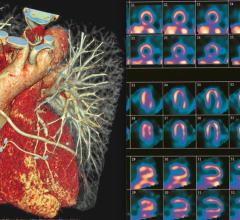
April 29, 2021 – A retrospective analysis of risk factors for coronary artery disease (CAD) in young African American patients is being presented at the Society for Cardiovascular Angiography and Interventions (SCAI) 2021 Virtual Scientific Sessions this week. The findings reveal this specific patient segment, African-Americans under age 45, experiences greater CAD risk factors related to smoking, drug and alcohol abuse, HIV as well as mental health conditions including anxiety and depression.
CAD is the most common type of heart disease, with high blood pressure, obstructive sleep apnea and diabetes among traditional risk factors.[1] African Americans are disproportionally impacted by heart disease, and are more likely to develop the chronic, progressive condition earlier in life.[2] Despite this, the prevalence of and risk factors for CAD in a younger, African American patient population is understudied.
A retrospective analysis of the National Inpatient Sample (NIS) was performed to identify all the 139,657 African American patients with CAD in 2017, identified using international classification of disease-10 ICD 10 codes and then classified into two groups based on age. Group 1 consisted of 7,093 African American patients aged 18-45 years old and Group 2 consisted of 131,520 African American patients older than 45 years old. Patient baseline characteristics and co-morbid conditions were recorded and analyzed.
Results showed African Americans aged 18-45 years who present with CAD have lower incidence of traditional risk factors and higher incidence of non-traditional risk factors. In the younger patient group (Group 1) there was significant higher prevalence of obesity [31.2% vs. 19.4%], drug abuse [17.8% vs. 6.7%], alcohol abuse [5.2% vs. 4.3%], smoking [49.8% vs. 46.6%], HIV [1.88% vs. 0.88%] end-stage renal disease [20.7% vs. 14.6%] and depression [13.8% vs. 10.4%] compared to patients over 45. There was no statistically significant difference between groups for hypertension, diabetes mellitus, congestive heart failure, obstructive sleep apnea and gender.
“In our practice, we are seeing more African American patients come in with heart attacks caused by coronary artery disease at a younger age, causing major health and lifestyle implications,” said Ahmad Awan, M.D., cardiology fellow, Howard University Hospital in Washington, D.C. “As we look at how to tailor prevention for a population already at high-risk for cardiovascular diseases, our data points to a need to look beyond the standard risk factors to help address the complex burden of disease and interventions needed for effective early prevention. Understanding the unique risk profile is a first step for more individualized patient interventions.”
The authors state that the analysis is part of a larger study and that further well-powered, randomized controlled trials are needed to validate these findings.
The U.S. Agency for Healthcare Research and Quality maintains NIS as part of a family of databases and software tools developed for the Healthcare Cost and Utilization Project (HCUP). The NIS is the largest publicly available all-payer inpatient healthcare database designed to produce U.S. regional and national estimates of inpatient utilization, access, charges, quality and outcomes.
Find more news from the SCAI 2021 virtual meeting
References:


 January 23, 2024
January 23, 2024 








